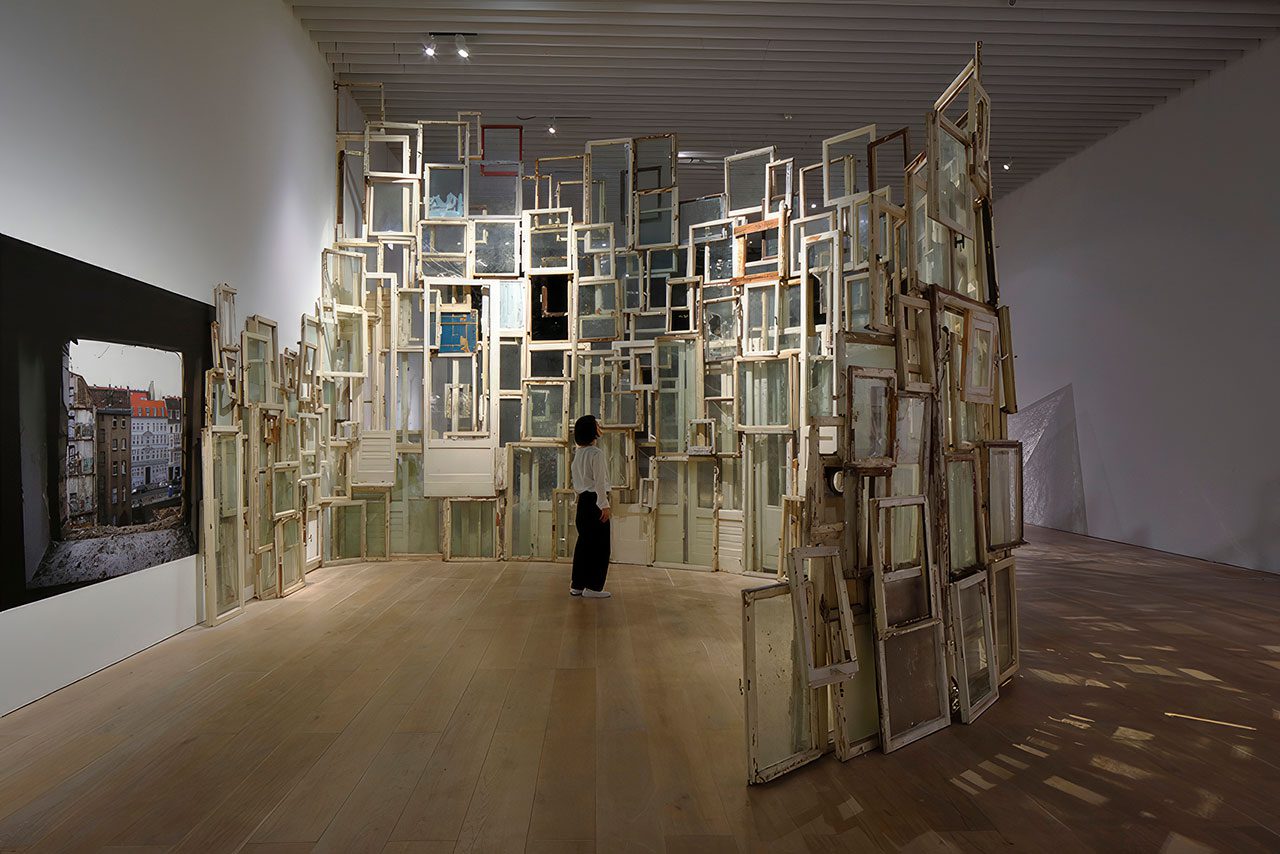PRESENTATION: Chiharu Shiota-The Soul Trembles
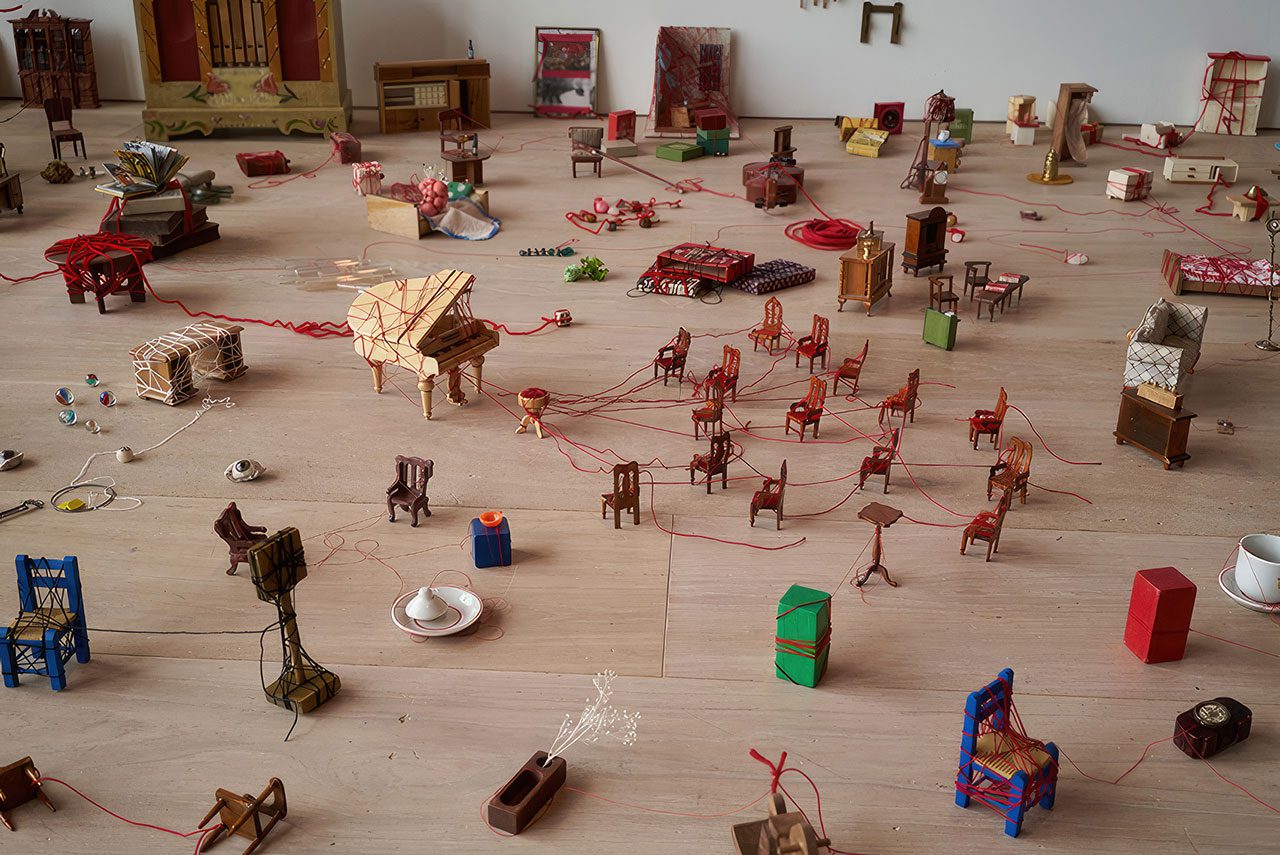 Born in 1972 in the Japanese city of Osaka, Chiharu Shiota has been living and working in Berlin since 1997. Using woven yarn, the artist combines performance, body art and installations in a process that places at its center the body. Her protean artistic approach plays with the notions of temporality, movement and dreams, and demands a dual engagement from the viewer, both physical and emotional.
Born in 1972 in the Japanese city of Osaka, Chiharu Shiota has been living and working in Berlin since 1997. Using woven yarn, the artist combines performance, body art and installations in a process that places at its center the body. Her protean artistic approach plays with the notions of temporality, movement and dreams, and demands a dual engagement from the viewer, both physical and emotional.
By Efi Michalarou
Photo: Grand Palais Archive
As a preview of the reopening of all its galleries in June 2025, the Grand Palais is presenting “The Soul Trembles”, an exhibition dedicated to the poetic and sensitive work of Chiharu Shiota. Since the mid-90s, the artist has produced installations of interlacing wool yarn, creating spectacular graphic networks through which the visitor must find their way and their place. These giant canvases often envelop objects from her everyday life (chairs, beds, pianos, clothes, etc.) and invite the viewer on a majestic, dreamlike journey. Though famous for her entangled pieces, the artist’s practice also extends to sculpture, photography, video and drawing, and a body of this work will be presented in the exhibition. Her protean creations explore the notions of temporality, movement and dreams, demanding a dual engagement from the viewer, both mental and physical. The exhibition is the largest ever devoted to the artist in France, spanning more than 20 years of her career. It offers a sensitive experience through several monumental installations spread over more than 1,200 square meters. Having experienced the fragility of the life she has been granted, directly and on multiple occasions, Shiota hopes that this exhibition will be able to transmit the tremors of her own soul to others, with her entire body. With seven large-scale installations, sculptures, photographs, drawings, performance videos and archive documents related to its staging project, the exhibition represents an opportunity for visitors to familiarize themselves with Shiota’s career, which spans over twenty years. Chiharu Shiota was born in Osaka, Japan in 1972. Her parents came from the rural prefecture Kochi. In the summer they would take Shiota and her two brothers to her grandmother’s grave, which she would tend by removing the embedded weeds whose entangled roots were enmeshed in the soil above the body. It was a memory that would haunt her along with that of a fire at her neighbor’s house, which left a charred piano among the debris. Her parents ran a factory producing fish crates. Shiota knew that wasn’t for her. She was always drawing or painting, and at twelve years of age decided she would be an artist. In 1991, Shiota saw an exhibition of the Polish sculptor and fiber artist Magdalena Abakanowicz’s work at the Museum of Modern Art in Shiga. This made her realize that art wasn’t just something to be looked at and led to Shiota enrolling at Kyoto Seika University to study oil painting from 1992 until 1996. She also spent a semester abroad as an exchange student at the then Canberra School of Art at the Australian National University (ANU; now the ANU School of Art and Design). It was during her time at the ANU that she created Becoming Painting, 1994, a performance in which she covered herself with red enamel paint. This was the beginning of her venture into performance and installation art. While at the ANU a fellow student mistook Shiota’s Abakanowicz catalogue for that of Serbian performance artist Marina Abramović and offered to introduce her. Shiota, after a long and involved process, ended up being invited to study in Germany with Abramović, and later with Rebecca Horn at the Universität der Künste in Berlin, which she did between 1999 and 2003. These events could almost be considered an auspicious start to her international career. Shiota has since been based in Berlin and would eventually go on to represent Japan in the 56th Venice Biennale with “The Key in the Hand” (2015). It is not so unusual for an artist to be appreciated elsewhere before they are acknowledged in their country of birth. In 1997, Shiota performed “Try and Go Home”, in Kerguéhennec, France. It was a silent performance during which the artist hollowed out a cave-like space from the earth on a cliff face. Rolling in and out of the space, her naked body collected remnants of the soil and detritus from the surrounds. She made numerous attempts to enter the space, all leaving a trace. Even after washing herself clean, her efforts remained lingering in her memory.
After arriving in Germany in 1997, Shiota always seemed to be moving, and at one point had relocated nine times within three years. Moving so many times meant she would often wake up not knowing where she was. In a conversation with the British curator and writer James Putnam, Shiota described how she had started weaving with twine around her belongings, marking her territory and later incorporating objects used by other people with their own histories. This would eventually evolve and develop into her larger thread-based installations. Shiota would weave web-like structures around the objects she was connected to, giving them the appearance of spider’s silk. The threads cocooned the articles, keeping them in place and in time. It was during a fellowship at the Akademie Schloss Solitude in Stuttgart that Shiota created her first large-scale installation, “In Silence” (2002), using black wool to weave around objects and belongings. These threads would later become red in “Dialogue From DNA” (2004), which toured Europe throughout 2004. For this work, Shiota had collected over 450 pairs of shoes that the previous owners had inscribed, on the soles, with a story or an experience while wearing them. Each shoe with its discrete history was individually tied by a single red thread, which then converged to a single common point of origin, separated and yet joined. Shiota doesn’t work from models, but responds to and works directly in the space. A team of five to ten assistants over a period of ten–fourteen days work together as the thread with varying degrees of tautness is pulled, forming lines. Angles are made and structures formed in an almost meditative rhythm during the creation of the installation. It’s like drawing in the air, and the result is indicative of how Shiota is feeling at the time. A balanced disposition usually means a harmonious regular weave whereas troubling thoughts give way to dense tangled threads and knots, thus influencing the overall ambience of the final work. Shiota’s installations are simultaneously delicate yet powerful enveloping environments. The sheer density of the threads creates potent “soft” architectural structures that are at once disquietingly familiar and almost alien. They present as a tornado of lost and recalled memories, recollected dreams of the unfamiliar familiar with the maelstrom above at odds with the calm beneath. Inhabiting these immense gallery spaces, being overwhelmed and amazed by the sheer scale and the use of these objects with their own history, you can’t help but consider and reflect on that which cannot be put into words. Shiota’s installations blur the line between dreams and recalled reality, creating doubt over which is which. One is reminded of the Chinese philosopher Zhuangzi’s story of a man who dreams he is a butterfly, but upon awakening is not sure if he dreamt of being a butterfly or is a butterfly dreaming of being a man. This story seems to have inspired her work “Butterfly Dream” (2018). In 2005, Shiota was diagnosed with ovarian cancer and after a twelve-year remission it has returned. It was the same year Shiota began using white thread for a project. One could speculate that the use of white at this time is influenced by her Japanese heritage, but may also reflect the fact that she has lived most of her life in the West. Previously, Shiota has explained that red is a reference to blood, fate and human relationships, while black is the night sky expanding into the universe and beyond. White would now appear to represent life, death, purity and infinity. The colours have certainly defined Shiota’s pursuit of the themes of life and death, what we are, what we think we are and what we will become. When Shiota realised her cancer had returned and recommenced hospital treatment, she ruminated about one’s soul, its lack of a physical entity, its apparent absence and fundamental questions about what it is to be. It is these feelings and thoughts, difficult to articulate through words, that she hopes will be interpreted as a poiesis by the experience of these works.
Photo: Chiharu Shiota, Connecting Small Memories (detail), 2019/2024, Mixed media, Dimensions variables, Installation view : Shiota Chiharu: The Soul Trembles, Mori Art Museum, Tokyo, 2019 Photo: Sunhi Mang, Photo courtesy: Mori Art Museum, Tokyo, © Adagp, Paris, 2024
Info: Curator: Curator: Mami Kataoka, The Grand Palais, 7 avenue Winston Churchill, Paris, France, Duration: 11/12/2024-19/3/2025, Days & Hours: Tue-Thu & Sat-Sun 10:00-19:30, Fri 10:00-22:00, www.grandpalais.fr/en
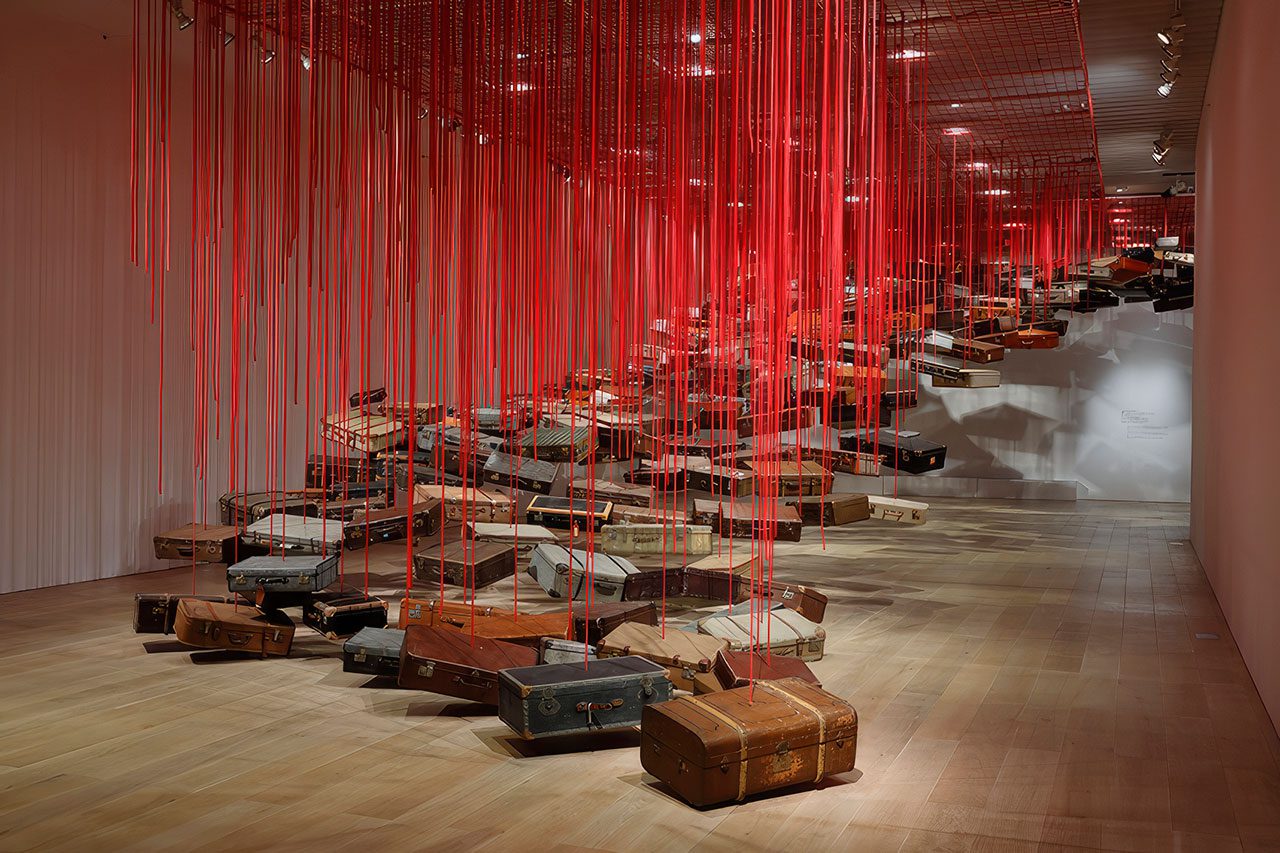
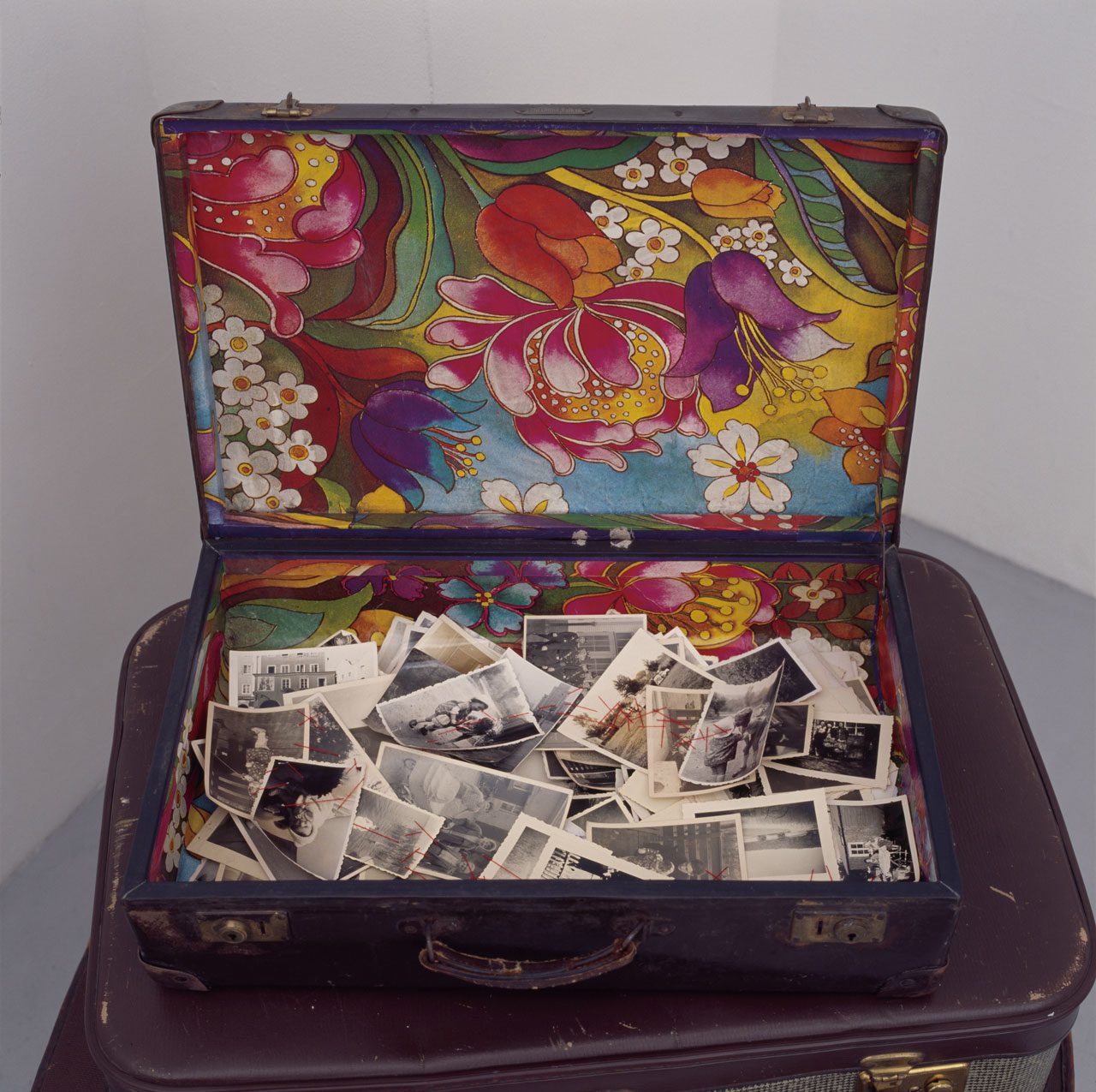
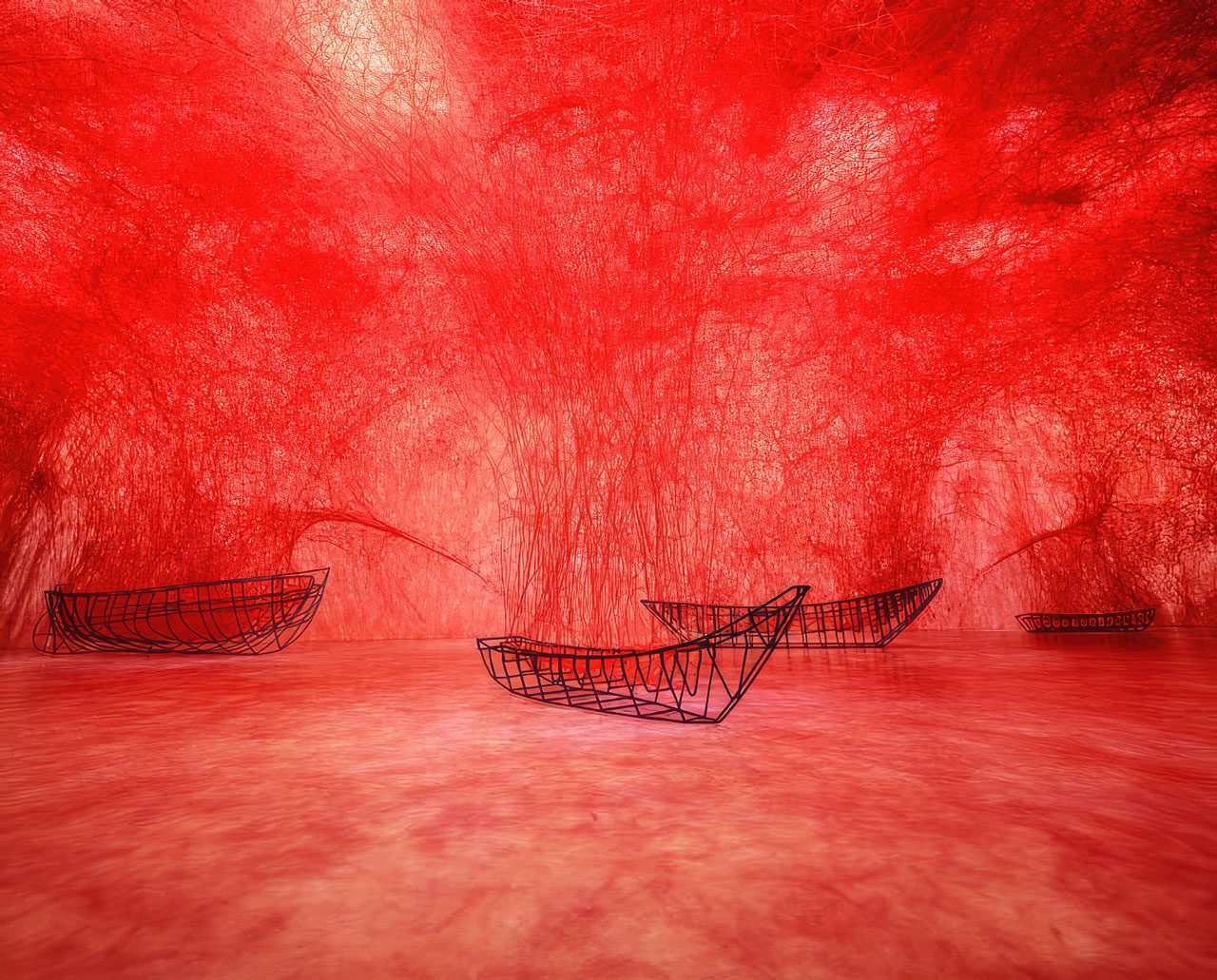
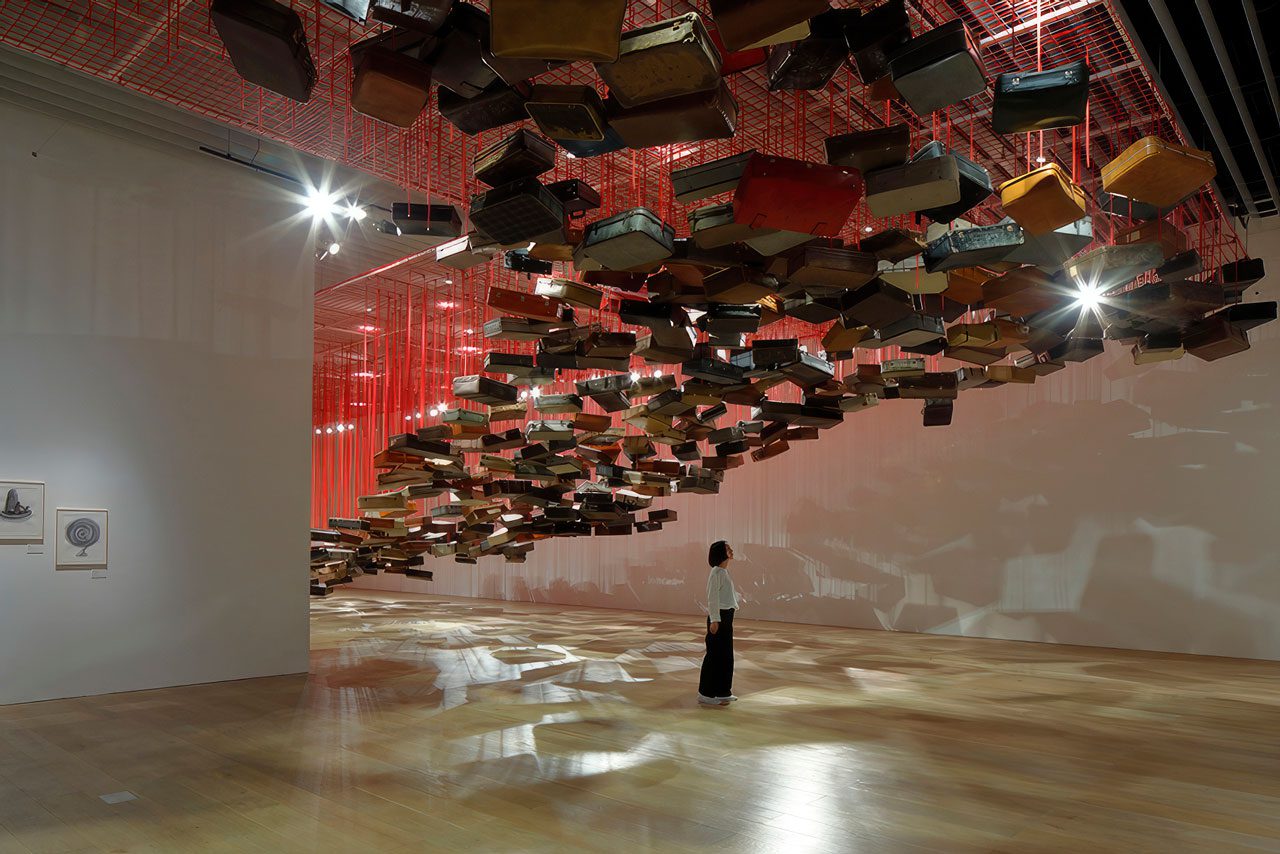
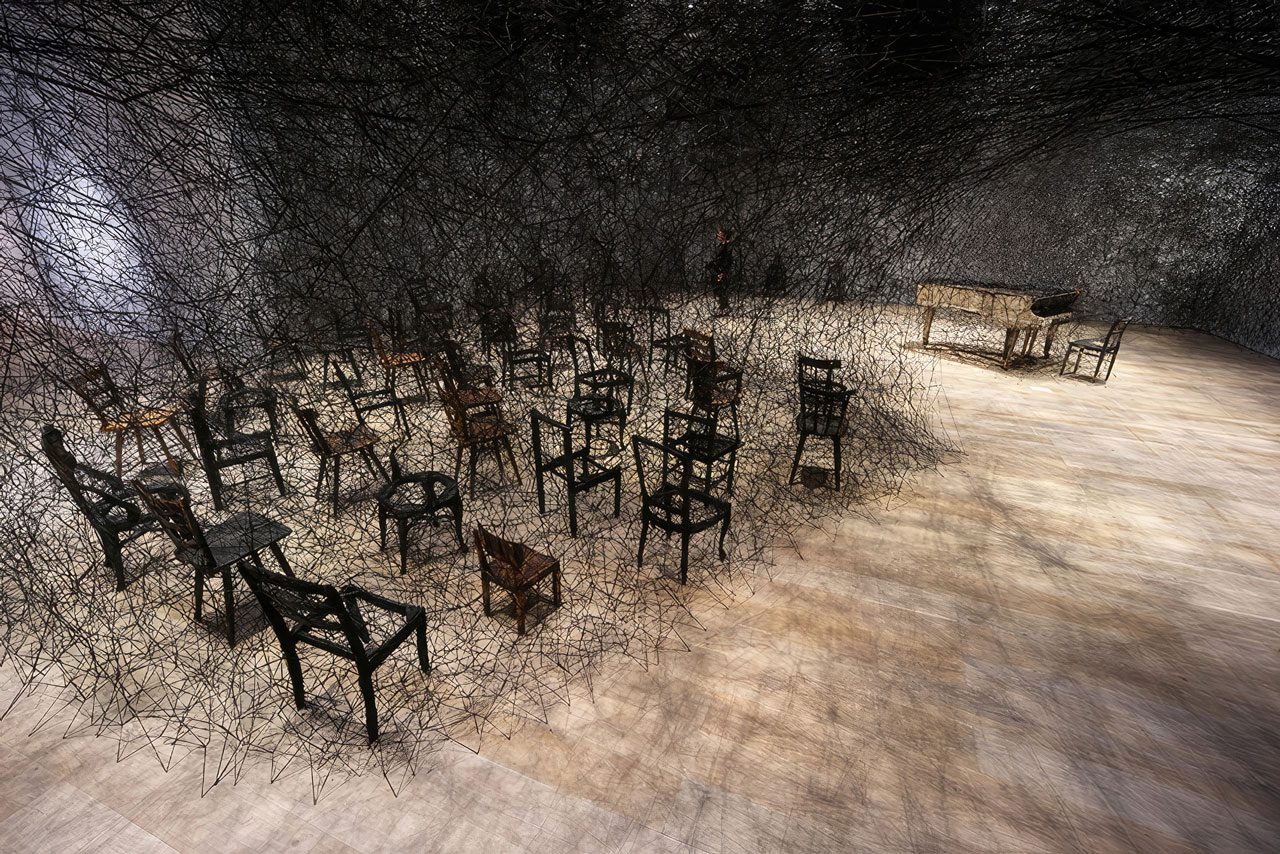
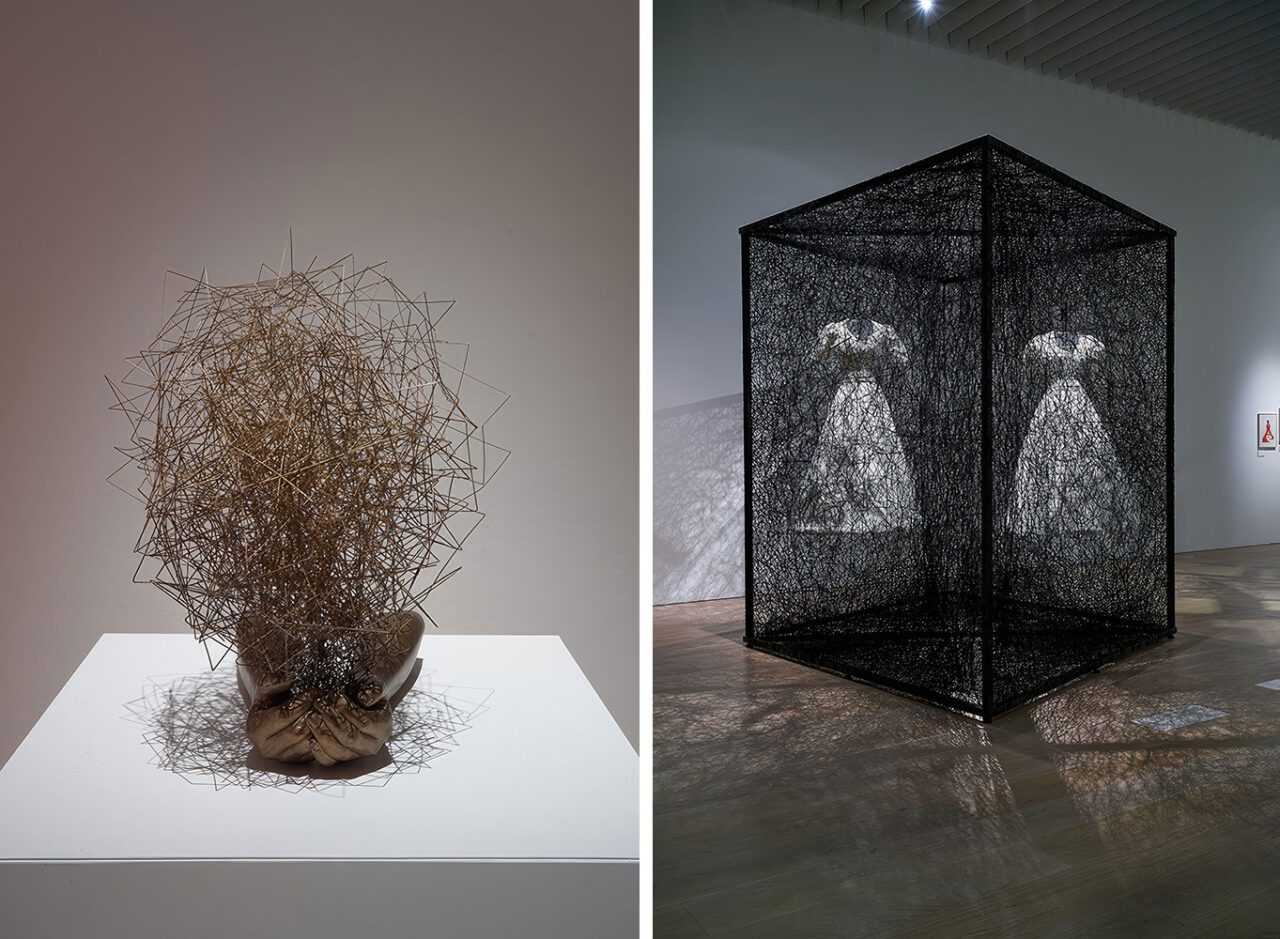
Right: Chiharu Shiota, Reflection of Space and Time, 2018, White dresses, mirror, metal frame, black Alcantara thread, Collection: Alcantara S.p.A., 280 × 300 × 400 cm, Installation view: *Nine Journeys through Time*, Palazzo Reale Milano, 2018, Photo: Sunhi Mang, © Adagp, Paris, 2024

